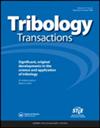Effects of TiC on the microstructure, mechanical properties and wear behavior of E690 steel prepared by laser cladding
IF 2.2
3区 工程技术
Q2 ENGINEERING, MECHANICAL
引用次数: 1
Abstract
Abstract For this study, E690 steel claddings with different contents of TiC were prepared by laser cladding for revealing effects of TiC on microstructure, mechanical properties, and wear behavior of the cladded steel. The microstructure and mechanical properties of the cladded alloys were observed and measured. The wear resistance of the cladded alloys was tested using a ball-on-disc tribometer. The experimental results showed that TiC refined the grain of the cladded alloy obviously. However, excessive TiC could lead to the network-like distribution of submicro TiC particles in the claddings. The microhardness of the cladded alloy with 1% TiC increased to 418.5 ± 10.7 HV500, and yield strength and ultimate tensile strength (UTS) increased by 11% and 7% compared with those of the cladded alloy without TiC. Excessive TiC decreased the tensile properties to an obvious degree. The addition of TiC improved the wear resistance of the cladded alloy significantly. When normal loads were 5 N and 10 N, the cladded alloy with 5% TiC exhibited high wear resistance, and the wear rates decreased by 59% and 78% compared with those of the cladded alloy without TiC. However, when normal load was 20 N, the cladded alloy with 1% TiC possessed superior wear resistance, and its wear rate decreased by 81% compared with that of the cladded alloy without TiC. The main wear mechanism of the cladded alloys was abrasion wear when normal load was low, but serious plastic deformation played a role in the wear process when normal load was high.TiC对激光熔覆E690钢组织、力学性能和磨损性能的影响
本文章由计算机程序翻译,如有差异,请以英文原文为准。
求助全文
约1分钟内获得全文
求助全文
来源期刊

Tribology Transactions
工程技术-工程:机械
CiteScore
3.90
自引率
4.80%
发文量
82
审稿时长
4 months
期刊介绍:
Tribology Transactions contains experimental and theoretical papers on friction, wear, lubricants, lubrication, materials, machines and moving components, from the macro- to the nano-scale.
The papers will be of interest to academic, industrial and government researchers and technologists working in many fields, including:
Aerospace, Agriculture & Forest, Appliances, Automotive, Bearings, Biomedical Devices, Condition Monitoring, Engines, Gears, Industrial Engineering, Lubricants, Lubricant Additives, Magnetic Data Storage, Manufacturing, Marine, Materials, MEMs and NEMs, Mining, Power Generation, Metalworking Fluids, Seals, Surface Engineering and Testing and Analysis.
All submitted manuscripts are subject to initial appraisal by the Editor-in-Chief and, if found suitable for further consideration, are submitted for peer review by independent, anonymous expert referees. All peer review in single blind and submission is online via ScholarOne Manuscripts.
 求助内容:
求助内容: 应助结果提醒方式:
应助结果提醒方式:


